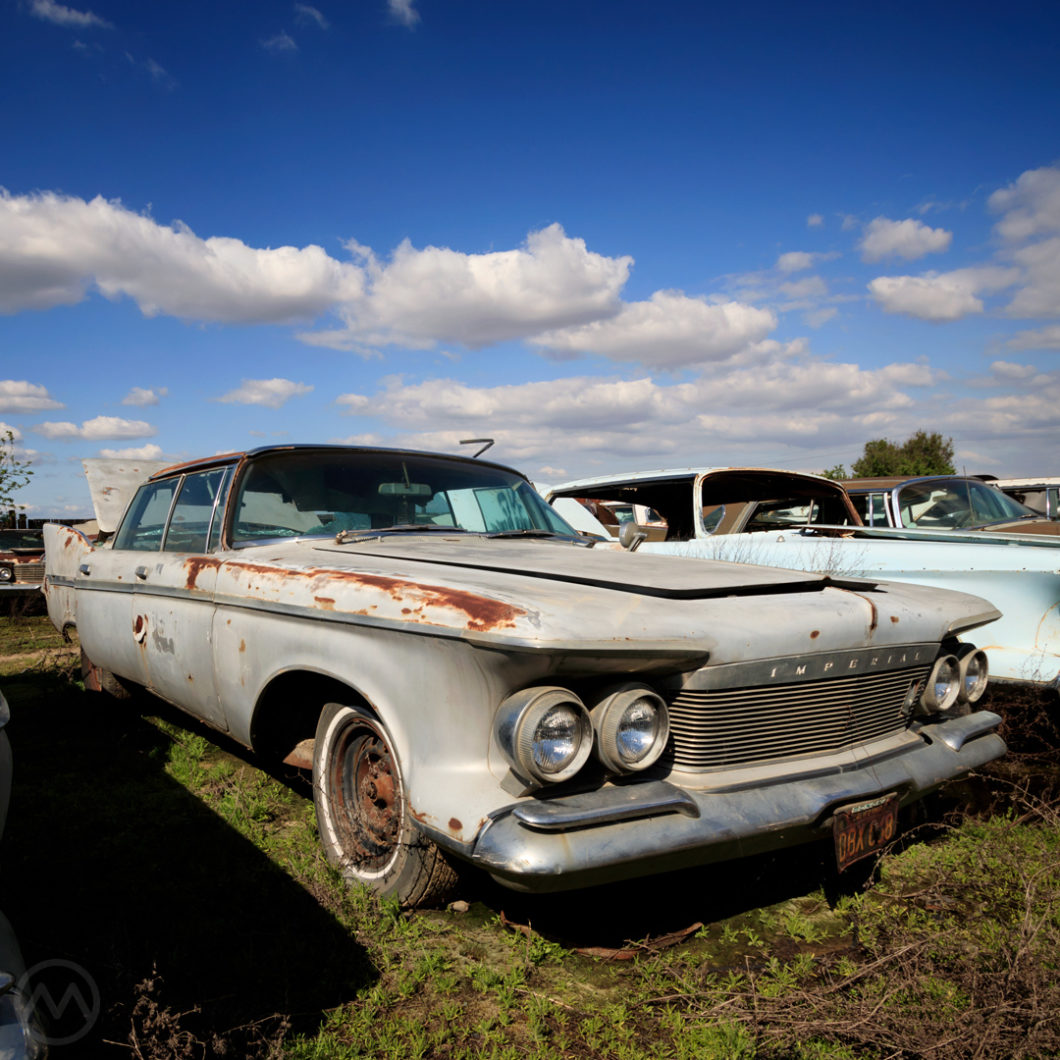There had always been “Chrysler Imperials” – with the very first series debuting in 1927, just three years after the birth of Chrysler itself. That first Imperial was a badge addition to Chrysler’s existing E-80 top-of-the-line model and grew into the early 1930s CG and CQ series Imperials – probably as fine as any Chrysler ever got.
But despite Chrysler being a semi-premium brand, being the “Chrysler Imperial,” management felt, held the car back from truly competing with pure luxury makes. So in 1955, Chrysler spun it off into a separate make all its own.
At the time Chrysler was enjoying a huge recovery and big sales with stylish new cars and ambitious plans for more. Imperial’s best ever year was 1957 – the “Forward Look” moved the Imperial further away from the regular Chryslers, netting prestige and record sales – 37,593.
But the good times didn’t last. The rushed ‘57s were notorious for quality ills throughout all of Mopar’s brands, a recession hit the ‘58s hard, and supplier strikes hurt the ‘59s. After that, Chrysler’s resources were almost always stretched.
Imperials continued on their own platform – the one introduced in 1957 – until 1967, with major restyles in 1960 and 1964.
Imperial’s Niche Status
All of the other Mopar full-size products went unibody in 1960, but the Imperial’s size and niche status meant it retained the old body-on-frame setup, better for smothering any and all noise and vibration. Chrysler had watched Ford’s unhappy experience with the too-big-unibody Lincolns in 1958 and decided that was not for them.
After 1959 Imperials were also built in their own factory on Warren Avenue in Dearborn, a former Jewett and then Graham-Paige facility that was completely renovated in hopes of producing vast quantities of Imperials – though that’s not what happened.
The 1960 (and 1961, as seen here) Imperials were massive and opulent – more powerful than Cadillac or Lincoln with a big 413 “Wedge” V8, and they handled well for such a large car (224”/5.7M long, 4,750 lbs.) thanks to Chrysler’s “torsion aire” setup, named for its torsion bars. Early Torsion Aires had been problematic but the system was bulletproof by 1960 and for a huge land yacht with finger-light power steering, the cars actually were pretty responsive.
Classics in a time of Modernism
Though widely attributed just to styling chief Virgil Exner, these cars were primarily styled by Fred Hudson under Bill Brownlie, who ran the Imperial studio under Exner and his first lieutenant Cliff Voss – though Exner was personally involved since these were Chrysler’s most prestigious products and because Exner was a big fan of classics and neoclassic styling.
Hudson had styled the 1960 car and to update it the focus would now be on the front of the car – Hudson was inspired by a Cord 810 he saw at a local garage that specialized in classics – in 1959 that meant pre-war cars exclusively and even late 1930s cars were only just beginning to be “classics.”
An idea for hidden headlamps proved too expensive, so free-standing “light pods” to mimic old-timey separate headlights were substituted in fenders that required complex stampings to make them work. It’s possible that by the time the work was done to make the free-standing lights work, the total cost was larger than hidden headlamps would’ve been.
More, more … too much.
1960’s huge fins were kept. In fact, everything about the ’61 was basically more of the ’60 except for that front end.
And then the 1961 Lincoln arrived – clean and crisp and spare, and made the Imperial look absurdly overwrought. A Texas dealer famously sawed off the fins and had cap moldings made to try and salvage his investment in ’61 Imperials – just 12,249 ’61s were made, and by the the summer of 1961 Chrysler was in yet another crisis.
The Imperial lost its factory and fins for ’62, the year of the “downsized” Dodges and Plymouths, and Chrysler’s recurring financial troubles meant an all-new Imperial design – part of Exner’s “S” car proposal – a preview of the later “fuselages” but closely resembling the Valiant, was dropped. Then a second round of all-new Imperial styling was hastily applied instead to the 1963 Chryslers.
By the time they arrived Exner was gone, and the Imperial never again serious challenged Cadillac or Lincoln. The ’62-’63 cars were more restrained than 1961 but without expensive changes there wasn’t much the staff could do. A huge remake would come with new style chief Elwood Engel (the force behind the ’61 Lincoln) for 1964.

